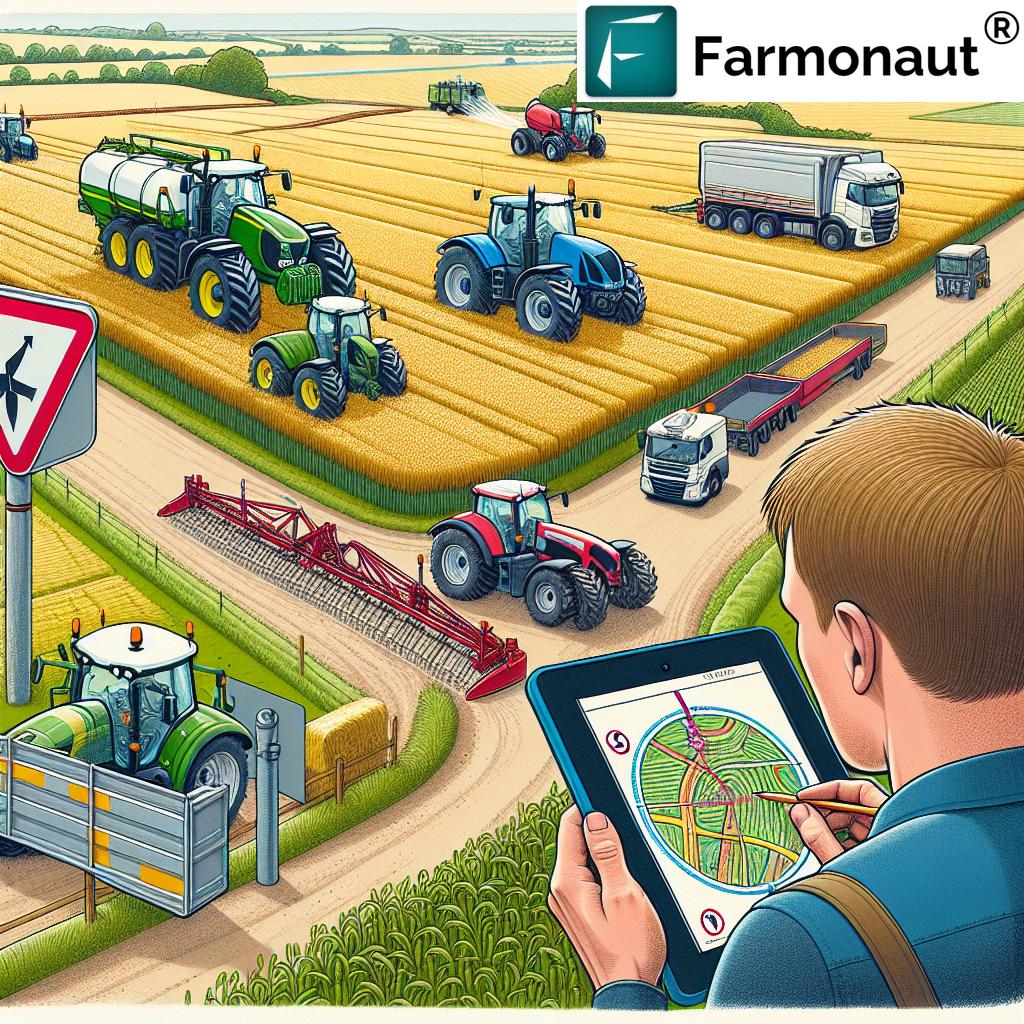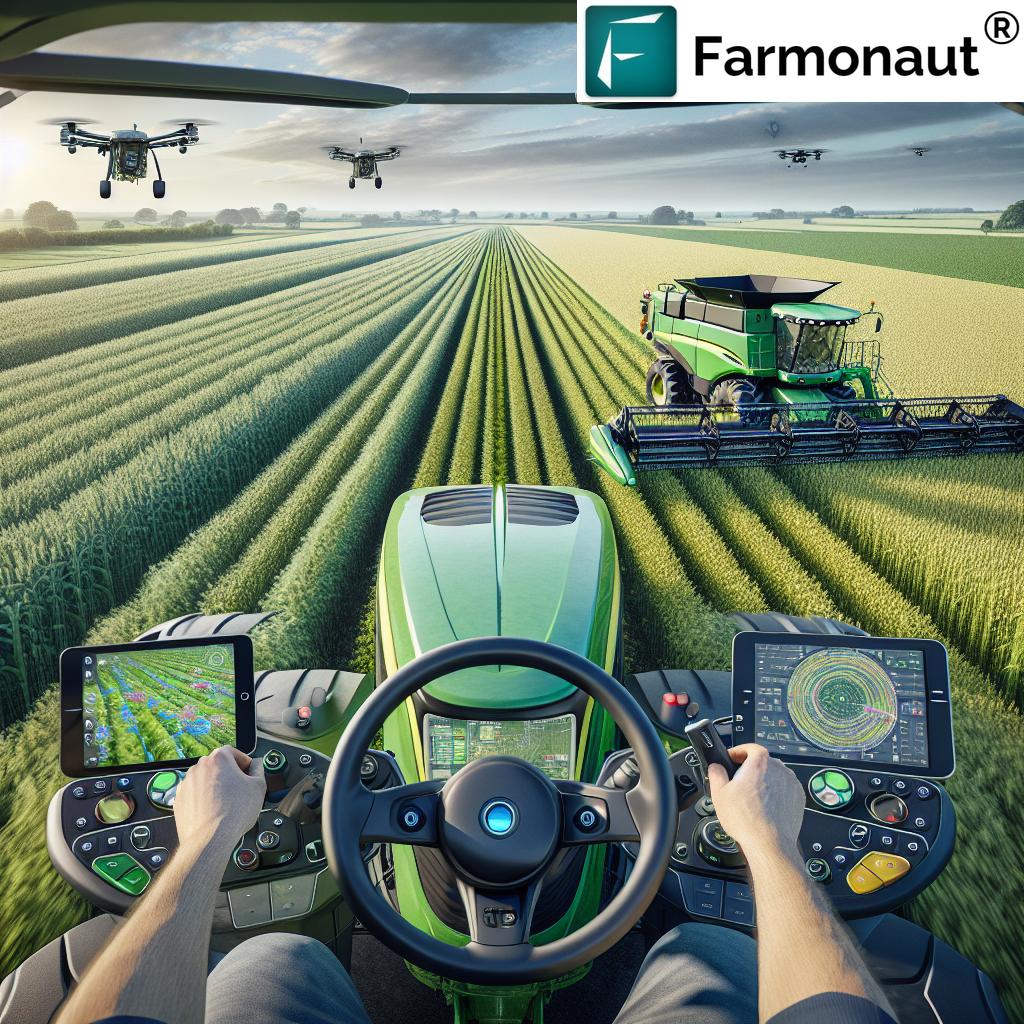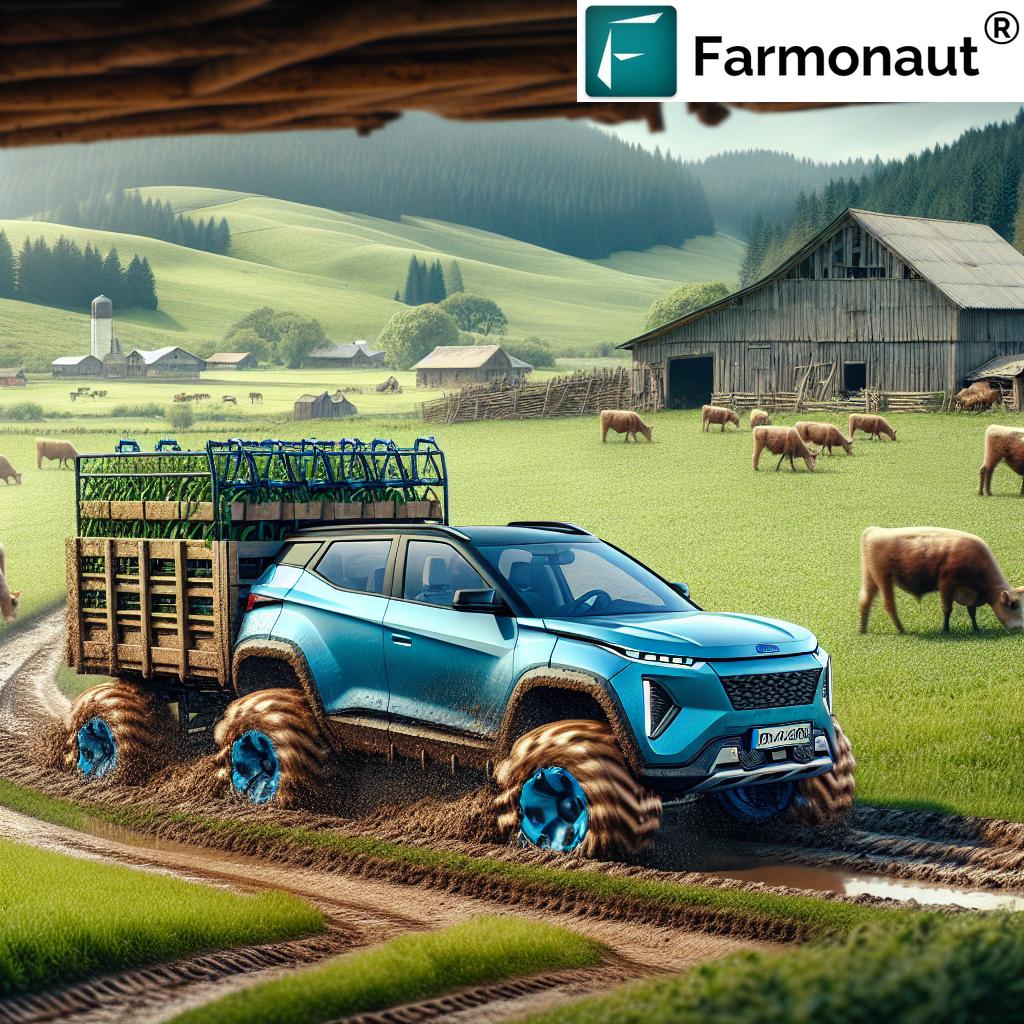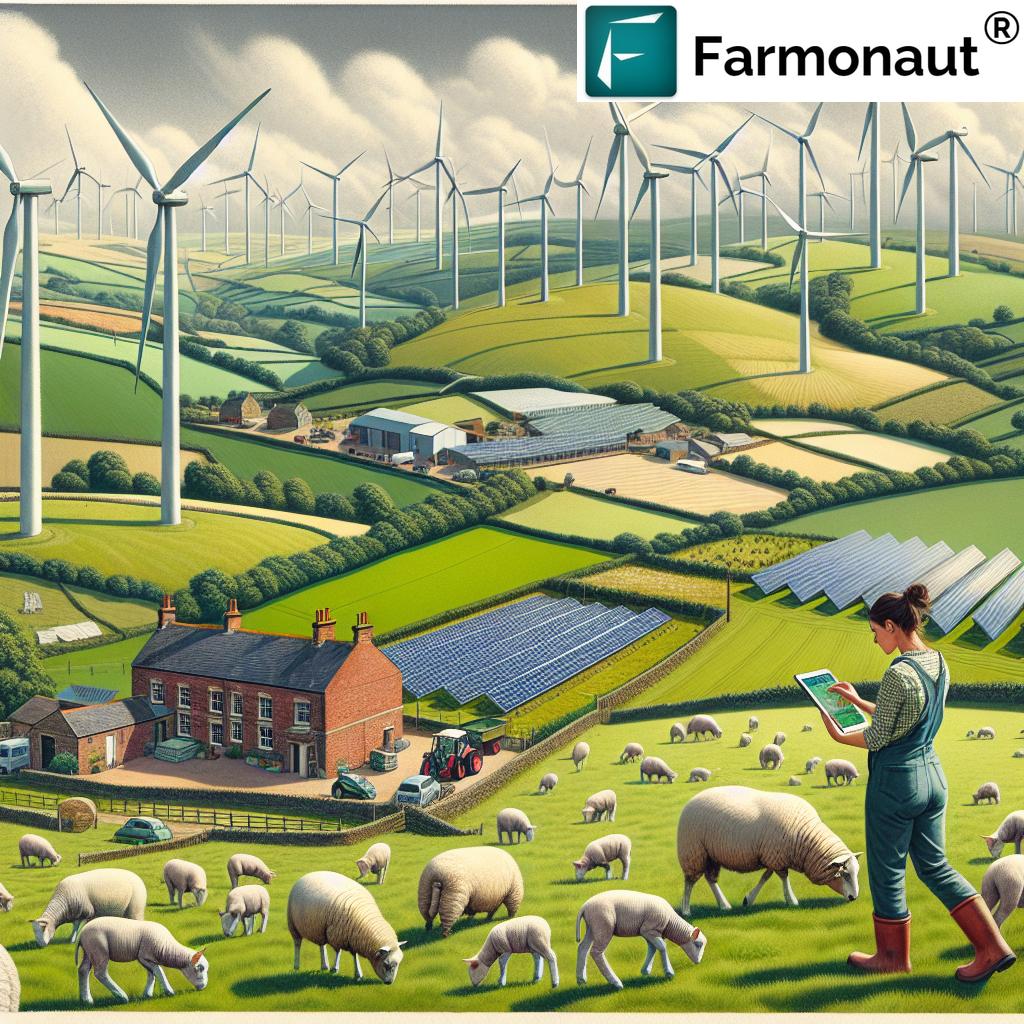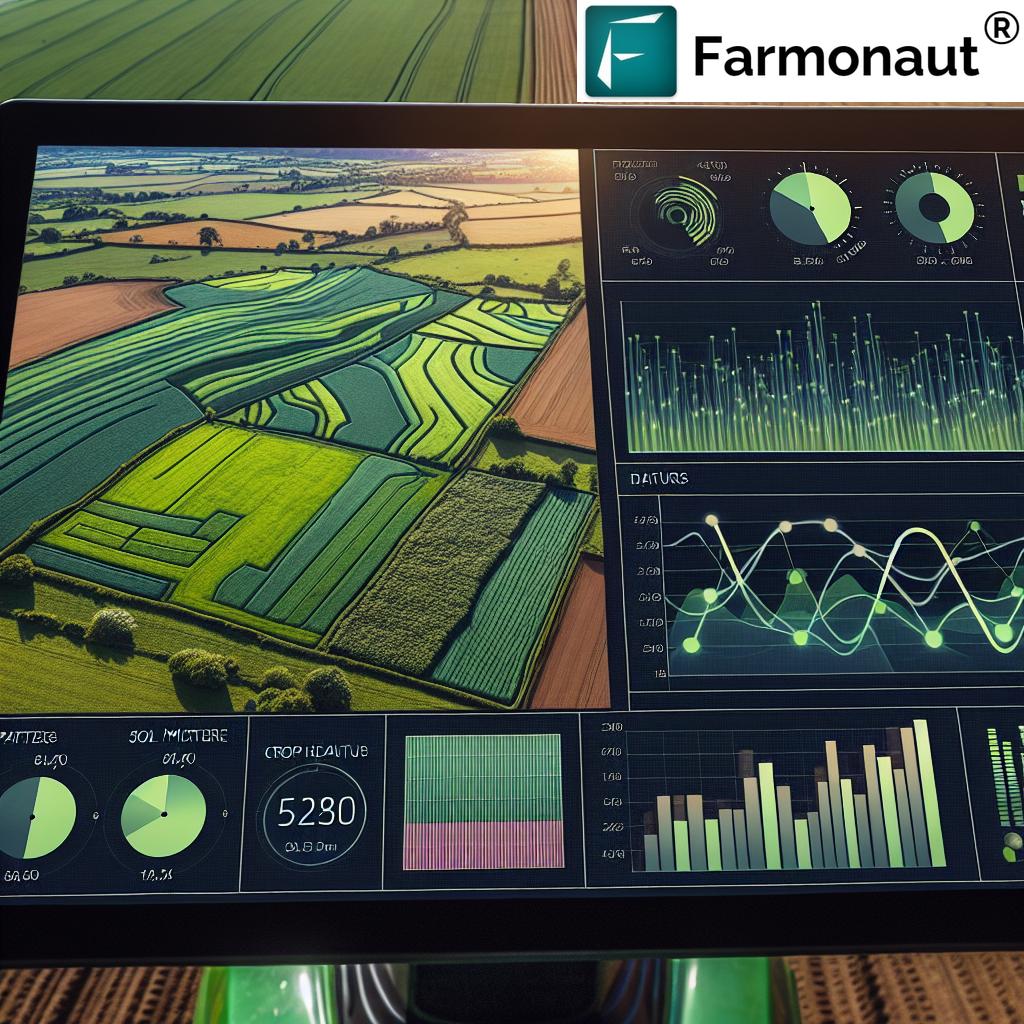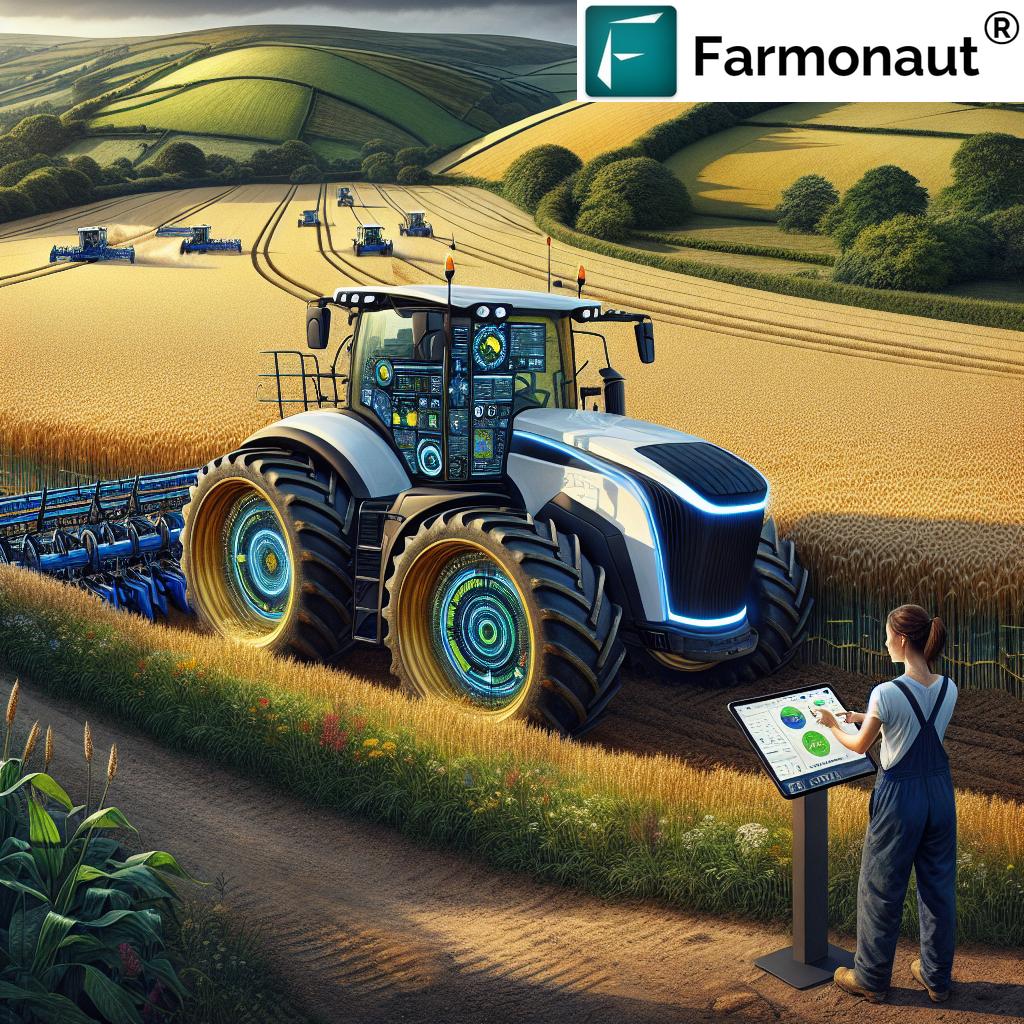The Ultimate Guide to UK Agricultural Vehicle Driving Licences: Regulations and Requirements
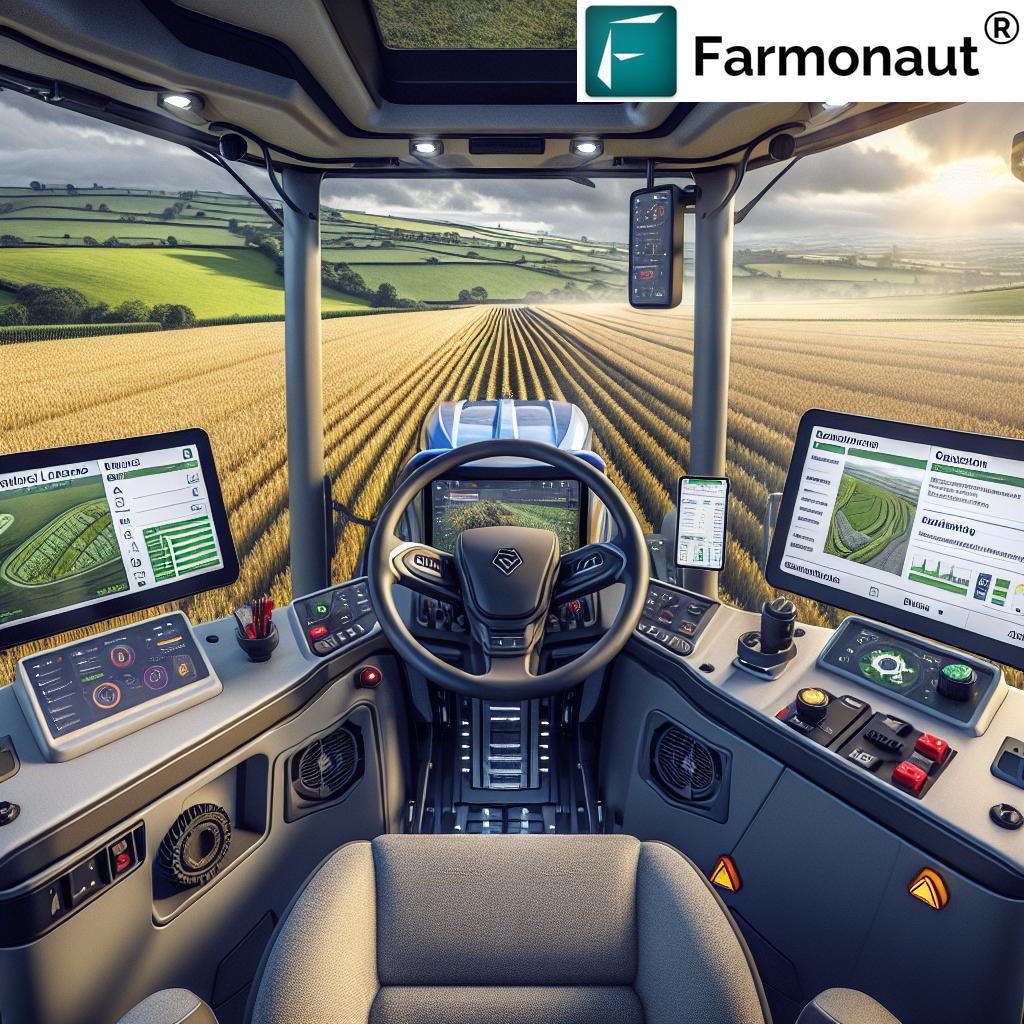
“In the UK, drivers as young as 16 can operate tractors on public roads with a Category F licence.”
Welcome to our comprehensive guide on UK agricultural vehicle driving licences, regulations, and requirements. As we navigate the complex world of farm machinery operation, we’ll explore everything from tractor driving requirements to the intricacies of tracked vehicle licensing. Whether you’re a seasoned farmer or a seasonal worker, understanding these regulations is crucial for safe and legal operation on British roads and farmlands.
In this guide, we’ll cover:
- Category F licences for tractors
- Age restrictions for various agricultural vehicles
- Regulations for high-speed tractors
- Requirements for tracked vehicles
- Road safety guidelines for agricultural machinery
- Rules for non-UK licence holders working in British agriculture
Let’s dive into the essential information you need to know about agricultural vehicle driving licences in the UK.
Understanding Category F Licences for Tractors
The Category F licence is the cornerstone of agricultural vehicle operation in the UK. This licence category specifically covers tractors and is essential for anyone looking to drive these vehicles on public roads. Here’s what you need to know:
- Age Requirement: Individuals can obtain a Category F licence from the age of 16.
- Vehicle Coverage: This licence allows you to drive tractors and other agricultural machinery on public roads.
- Weight Restrictions: Category F covers vehicles with a Maximum Authorised Mass (MAM) of up to 3.5 tonnes.
- Trailer Regulations: You can tow trailers with a Category F licence, but there are specific rules regarding trailer weight and dimensions.
It’s important to note that while a Category F licence allows you to drive tractors on public roads, there are additional considerations for farm work and private land operation.
Obtaining a Category F Licence
To obtain a Category F licence, applicants must:
- Be at least 16 years old
- Pass a theory test specific to agricultural vehicles
- Complete a practical driving test with a tractor
- Demonstrate knowledge of road safety and agricultural vehicle operation
Remember, while you can drive a tractor at 16, there are additional age restrictions for other types of agricultural vehicles and for operating on certain types of roads.
Age Restrictions for Agricultural Vehicles
Age restrictions play a crucial role in the operation of agricultural vehicles in the UK. These restrictions are designed to ensure that operators have the necessary maturity and experience to handle these often large and complex machines safely. Let’s break down the age requirements for different types of agricultural vehicles:
- Standard Tractors: As mentioned earlier, you can drive a standard tractor on public roads from the age of 16 with a Category F licence.
- Telehandlers: The age requirement for telehandlers depends on their use. For agricultural purposes, the minimum age is typically 18.
- Sprayers: Self-propelled sprayers usually require operators to be at least 18 years old.
- Combine Harvesters: Due to their size and complexity, combine harvesters generally require operators to be 18 or older.
- High-Speed Tractors: For tractors capable of speeds exceeding 40 km/h (25 mph), the minimum age is 21.
It’s crucial to note that these age restrictions apply to public road use. On private farmland, different rules may apply, but safety should always be the primary concern.
Special Considerations for Young Drivers
While the UK allows young drivers to operate certain agricultural vehicles, there are additional considerations:
- Training: Young drivers should receive comprehensive training before operating any agricultural machinery.
- Supervision: In many cases, young drivers may need to be supervised by an experienced operator, especially when learning to use new or complex machinery.
- Insurance: Insurance policies may have specific requirements or restrictions for young drivers of agricultural vehicles.
- Health and Safety: Employers must ensure that young workers are not exposed to risks due to lack of experience or maturity.
By adhering to these age restrictions and considerations, we can help ensure the safety of both young operators and others on the road or farm.
Regulations for High-Speed Tractors
“High-speed agricultural vehicles in the UK have specific age restrictions, differing from standard tractor regulations.”
High-speed tractors, defined as those capable of exceeding 40 km/h (25 mph), are subject to special regulations in the UK. These vehicles bridge the gap between traditional agricultural machinery and road vehicles, requiring additional considerations for safe operation. Here’s what you need to know about high-speed tractor regulations:
- Licence Requirement: Operators of high-speed tractors must hold a category B car licence, not just a category F tractor licence.
- Age Restriction: The minimum age for driving a high-speed tractor on public roads is 21.
- Speed Limits: Despite their capabilities, high-speed tractors are still subject to lower speed limits than cars on most roads.
- Roadworthiness: These vehicles must meet stricter roadworthiness standards, including more rigorous braking requirements.
- Tacho-meters: High-speed tractors used for non-agricultural purposes may require the installation of tachographs to monitor driving hours.
It’s important to note that these regulations apply when the tractor is being used on public roads. Different rules may apply when operating solely on private farmland.
Safety Considerations for High-Speed Tractors
Operating a high-speed tractor requires additional safety precautions:
- Enhanced Training: Operators should receive specific training on handling these more powerful vehicles.
- Road Awareness: Drivers must be extra vigilant of other road users, who may not expect a tractor to be moving at higher speeds.
- Load Security: At higher speeds, ensuring that any load or trailer is securely attached becomes even more critical.
- Maintenance: Regular checks and maintenance are crucial to ensure the vehicle remains safe at higher speeds.
By understanding and adhering to these regulations and safety considerations, operators can ensure the safe use of high-speed tractors on UK roads.
Explore Farmonaut’s API for advanced agricultural insights
Requirements for Tracked Vehicles
Tracked vehicles, such as crawler tractors and some types of harvesters, have their own set of regulations in the UK. These machines, characterized by their continuous track system instead of wheels, require special consideration due to their unique handling characteristics and potential impact on road surfaces.
Here are the key requirements for operating tracked vehicles:
- Licence Type: Generally, a category H licence is required for tracked vehicles.
- Age Restriction: The minimum age for operating most tracked vehicles is 21.
- Road Use Limitations: Many tracked vehicles are not permitted on public roads without special permission due to potential damage to road surfaces.
- Speed Restrictions: When permitted on roads, tracked vehicles are often subject to lower speed limits than wheeled agricultural machinery.
- Special Permits: In some cases, operators may need to obtain special permits or permissions to move tracked vehicles on public roads, especially for longer journeys.
Operating Tracked Vehicles Safely
When operating tracked vehicles, consider the following safety measures:
- Surface Protection: Use protective mats or plates when crossing paved surfaces to prevent damage.
- Visibility: Ensure the vehicle is clearly visible, using appropriate lighting and markings, especially when operating near public roads.
- Training: Operators should receive specific training on handling tracked vehicles, as their operation differs significantly from wheeled machinery.
- Maintenance: Regular maintenance is crucial, particularly for the track system, to ensure safe and efficient operation.
Understanding these requirements and safety measures is essential for anyone operating tracked vehicles in agricultural settings in the UK.
Road Safety Guidelines for Agricultural Machinery
Ensuring road safety when operating agricultural vehicles is paramount. These large, often slow-moving machines present unique challenges on public roads. Here are essential guidelines for safe operation:
- Visibility: Ensure your vehicle is clearly visible with working lights, reflectors, and a slow-moving vehicle sign when required.
- Width Restrictions: Be aware of your vehicle’s width, especially when towing implements. Use escort vehicles if necessary for oversized loads.
- Speed Limits: Adhere to speed limits for agricultural vehicles, which are often lower than standard road limits.
- Load Security: Ensure all loads are securely fastened and do not exceed weight limits.
- Road Cleanliness: Clean mud and debris from your vehicle before entering public roads to prevent hazards for other road users.
- Time of Travel: When possible, avoid peak traffic hours and use alternative routes to minimize disruption to other road users.
Navigating Different Road Types
Agricultural vehicles may encounter various road types, each with specific considerations:
- Highways: Generally, agricultural vehicles are not permitted on motorways.
- A and B Roads: Be extra cautious on these busier roads, using pull-in areas when available to allow traffic to pass safely.
- Country Lanes: Be prepared for narrow passages and limited visibility. Use mirrors effectively and be ready to stop or reverse if necessary.
- Bridleways and Byways: Check local regulations before using these routes, as restrictions may apply to certain types of agricultural vehicles.
- Footpaths: Agricultural vehicles are generally not permitted on public footpaths.
By following these guidelines and being considerate of other road users, we can significantly improve safety for everyone sharing the road with agricultural machinery.
Access Farmonaut’s API Developer Docs for integration
Rules for Non-UK Licence Holders in British Agriculture
The UK agricultural sector often relies on seasonal workers from other countries. Understanding the rules for non-UK licence holders is crucial for compliance and safety. Here’s what foreign workers need to know about operating agricultural vehicles in the UK:
- EU/EEA Licence Holders: Licences issued in EU or EEA countries are generally valid in the UK for the categories they cover.
- Non-EU Licence Holders: Drivers from outside the EU may drive in the UK on their foreign licence for up to 12 months from when they became resident.
- Exchanging Licences: After 12 months, most non-UK residents will need to exchange their licence for a UK one to continue driving legally.
- Category Equivalence: Ensure that your foreign licence category is equivalent to the UK category required for the agricultural vehicle you intend to operate.
- Insurance Requirements: Check that your insurance covers you to drive with a non-UK licence.
Additional Considerations for Seasonal Workers
Seasonal agricultural workers face unique challenges when it comes to vehicle operation in the UK:
- Language Barriers: Ensure you understand UK road signs and regulations. Consider taking a UK road safety course if needed.
- Temporary Residence: Be aware of how your residency status affects your driving rights in the UK.
- Vehicle Familiarization: Take time to become familiar with UK agricultural vehicles, which may differ from those in your home country.
- Employer Responsibility: Employers should verify the validity of foreign licences and provide necessary training on UK-specific regulations and machinery.
By understanding and adhering to these rules, non-UK licence holders can safely and legally operate agricultural vehicles during their work in British agriculture.
Licence Categories for Different Agricultural Vehicles
Understanding the various licence categories for agricultural vehicles is essential for compliance and safety. Here’s a breakdown of the main categories relevant to farm machinery:
- Category F: Covers agricultural tractors
- Category G: For road roller vehicles
- Category H: Tracked vehicles
- Category K: Mowing machines and pedestrian-controlled vehicles
It’s important to note that some agricultural vehicles may fall under standard vehicle categories:
- Category B: May cover some smaller agricultural vehicles and high-speed tractors
- Category C: Required for larger agricultural machines exceeding certain weight limits
Specialized Vehicles and Their Requirements
Some agricultural vehicles have specific licensing requirements:
- Combine Harvesters: Usually require a category F licence, but size and weight may necessitate a category C licence.
- Telehandlers: Depending on use and configuration, may require category F or B licence.
- Self-Propelled Sprayers: Often covered by category F, but high-speed versions may require category B.
- Unimog Vehicles: These versatile vehicles often require a category C licence due to their weight.
Always check the specific requirements for the vehicle you intend to operate, as classifications can change based on modifications or attachments.
Training and Certification for Agricultural Vehicle Operators
While having the correct licence is crucial, proper training and certification can significantly enhance safety and efficiency in agricultural vehicle operation. Here’s what you need to know about training and certification:
- Basic Training: Many agricultural colleges and training centers offer courses in tractor and machinery operation.
- Advanced Certifications: Specialized certifications are available for complex machinery like combine harvesters or telehandlers.
- Health and Safety Training: Courses covering general farm safety, including vehicle operation, are highly recommended.
- Refresher Courses: Regular updates to skills and knowledge are important, especially as technology in agricultural machinery advances.
Benefits of Proper Training
Investing in comprehensive training for agricultural vehicle operation offers numerous benefits:
- Increased safety for operators and others on the farm
- Improved efficiency in vehicle operation
- Better understanding of maintenance requirements
- Enhanced compliance with legal and insurance requirements
- Potential for reduced fuel consumption and vehicle wear
Remember, while not all training is legally mandated, it’s an investment in safety and efficiency that can pay significant dividends in the long run.
Maintenance and Inspection Requirements
Proper maintenance and regular inspections are crucial for the safe and efficient operation of agricultural vehicles. Here are the key points to consider:
- Daily Checks: Operators should perform basic checks on fluid levels, tires, and lights before each use.
- Scheduled Maintenance: Follow manufacturer guidelines for regular servicing and maintenance intervals.
- Annual Inspections: Many agricultural vehicles require annual safety inspections, similar to MOTs for cars.
- Record Keeping: Maintain detailed records of all maintenance and inspections for compliance and resale purposes.
- Brake Testing: Regular brake efficiency tests are crucial, especially for vehicles used on public roads.
Legal Requirements for Road-Going Agricultural Vehicles
Vehicles used on public roads must meet additional requirements:
- Proper lighting and reflectors
- Functional brakes on all axles
- Secure hitching for trailers and implements
- Roadworthy tires with sufficient tread depth
- Proper registration and taxation (where applicable)
Regular maintenance not only ensures safety but also prolongs the life of your agricultural vehicles, potentially saving significant costs in the long run.
Insurance and Liability Considerations
Proper insurance coverage is essential for agricultural vehicle operation. Here are key points to consider:
- Minimum Coverage: At least third-party insurance is legally required for vehicles used on public roads.
- Comprehensive Policies: Consider policies that cover theft, damage, and liability for both on-farm and road use.
- Operator Coverage: Ensure your policy covers all potential operators, including seasonal workers.
- Specialized Equipment: Custom or specialized attachments may need separate coverage.
- Public Liability: This covers damage or injury to third parties and their property.
Reducing Liability Risks
To minimize liability risks associated with agricultural vehicle operation:
- Maintain vehicles to high standards
- Ensure all operators are properly licensed and trained
- Keep detailed records of maintenance and operator training
- Follow all relevant regulations and safety guidelines
- Regularly review and update insurance policies
Remember, adequate insurance not only protects your assets but also provides peace of mind in case of accidents or unforeseen events.
UK Agricultural Vehicle Licence Requirements Table
| Vehicle Type | Minimum Age Requirement | Licence Category Required | Speed Restrictions | Additional Requirements/Notes |
|---|---|---|---|---|
| Standard Tractor | 16 | Category F | 25 mph (40 km/h) | Can tow trailers |
| High-Speed Tractor | 21 | Category B | 40 mph (64 km/h) | Additional training recommended |
| Tracked Vehicle | 21 | Category H | 20 mph (32 km/h) | Special road use permissions may be required |
| Combine Harvester | 18 | Category F (or C for larger models) | 20 mph (32 km/h) | Size restrictions may apply for road use |
| Self-Propelled Sprayer | 18 | Category F | 25 mph (40 km/h) | Specialized training recommended |
Note: This table provides general guidelines. Always check current regulations as they may be subject to change.
Technology and Agricultural Vehicle Management
As we navigate the complexities of agricultural vehicle licensing and operation, it’s crucial to recognize the role of technology in modern farming. Innovative solutions like those offered by Farmonaut can significantly enhance farm management and vehicle operation efficiency.
Farmonaut provides advanced satellite-based farm management solutions that complement your understanding of agricultural vehicle management. While not directly related to driving licences, these tools can help optimize your vehicle usage and overall farm operations:
- Satellite Crop Monitoring: Plan your vehicle routes more efficiently based on real-time crop health data.
- AI-Powered Advisory: Receive insights that can help in scheduling and optimizing agricultural vehicle use.
- Resource Management: Improve the allocation and tracking of your agricultural vehicles across your farmland.
By integrating these technological solutions with your knowledge of agricultural vehicle regulations, you can create a more efficient, safe, and compliant farming operation.
Frequently Asked Questions (FAQ)
Q1: Can I drive a tractor on public roads at 16?
A: Yes, with a Category F licence, you can drive a standard tractor on public roads at 16.
Q2: Do I need a special licence to drive a combine harvester?
A: Typically, a Category F licence is sufficient, but larger models may require a Category C licence.
Q3: Are there speed limits for agricultural vehicles on public roads?
A: Yes, most agricultural vehicles are limited to 25 mph (40 km/h) on public roads, with some variations based on vehicle type and local regulations.
Q4: Can I use my EU driving licence to operate agricultural vehicles in the UK?
A: Generally, yes. EU licences are recognized in the UK, but ensure your licence category matches the UK equivalent for the vehicle you intend to operate.
Q5: How often should agricultural vehicles be inspected?
A: Daily checks are recommended, with more thorough inspections annually or as per manufacturer guidelines.
Conclusion
Navigating the world of UK agricultural vehicle driving licences and regulations can be complex, but understanding these rules is crucial for safe and legal operation. From Category F licences for standard tractors to special considerations for high-speed and tracked vehicles, we’ve covered the essential aspects of agricultural vehicle operation in the UK.
Remember, compliance with these regulations not only ensures legal operation but also contributes to the safety of all road users and farm workers. As the agricultural sector continues to evolve, staying informed about the latest regulations and best practices is key to efficient and responsible farming.
While mastering the intricacies of vehicle licensing is important, it’s equally crucial to embrace technological advancements in farm management. Tools like Farmonaut’s satellite-based solutions can complement your understanding of agricultural operations, helping you optimize vehicle usage and overall farm efficiency.
By combining regulatory knowledge with innovative farming practices, we can drive the UK agricultural sector towards a safer, more efficient, and technologically advanced future.
